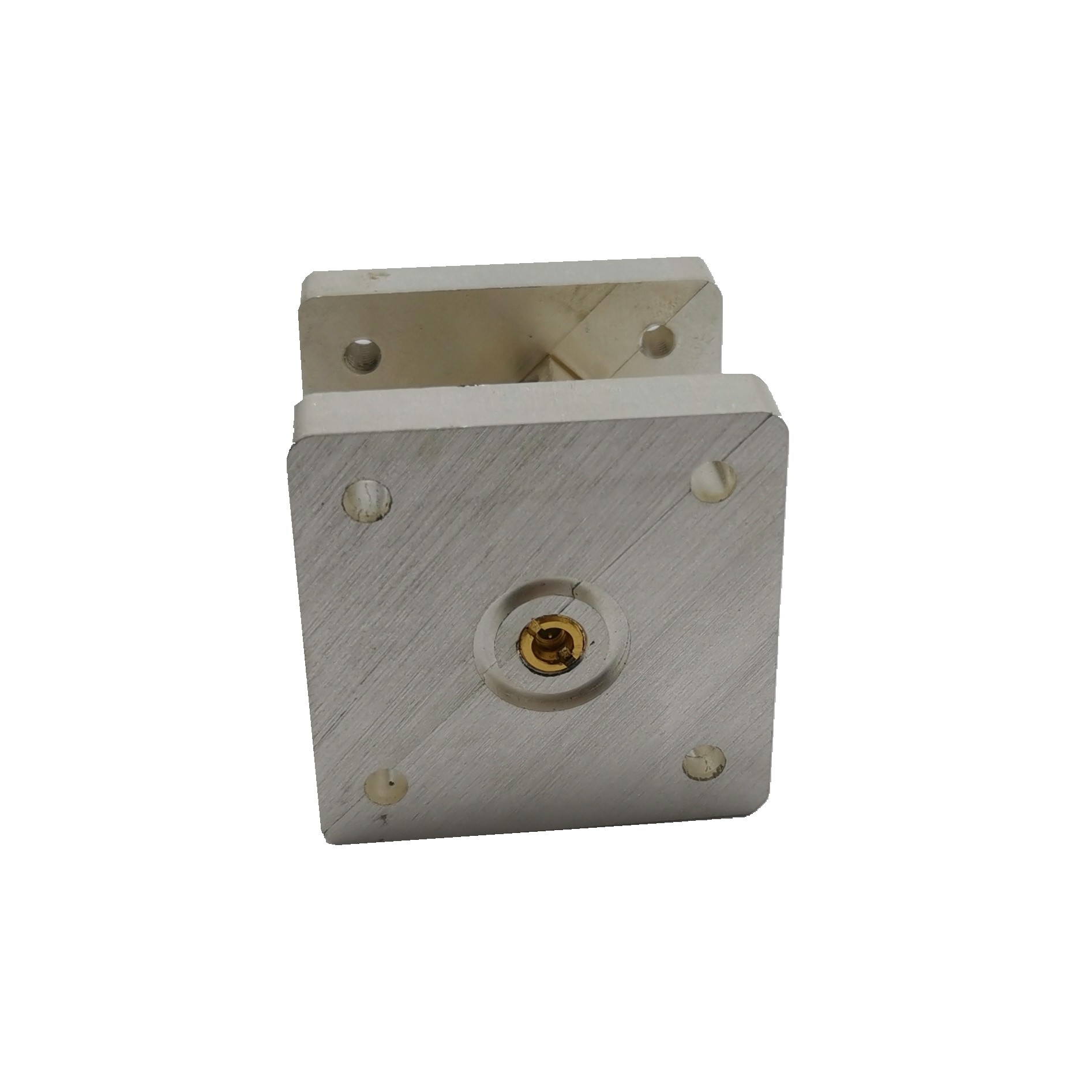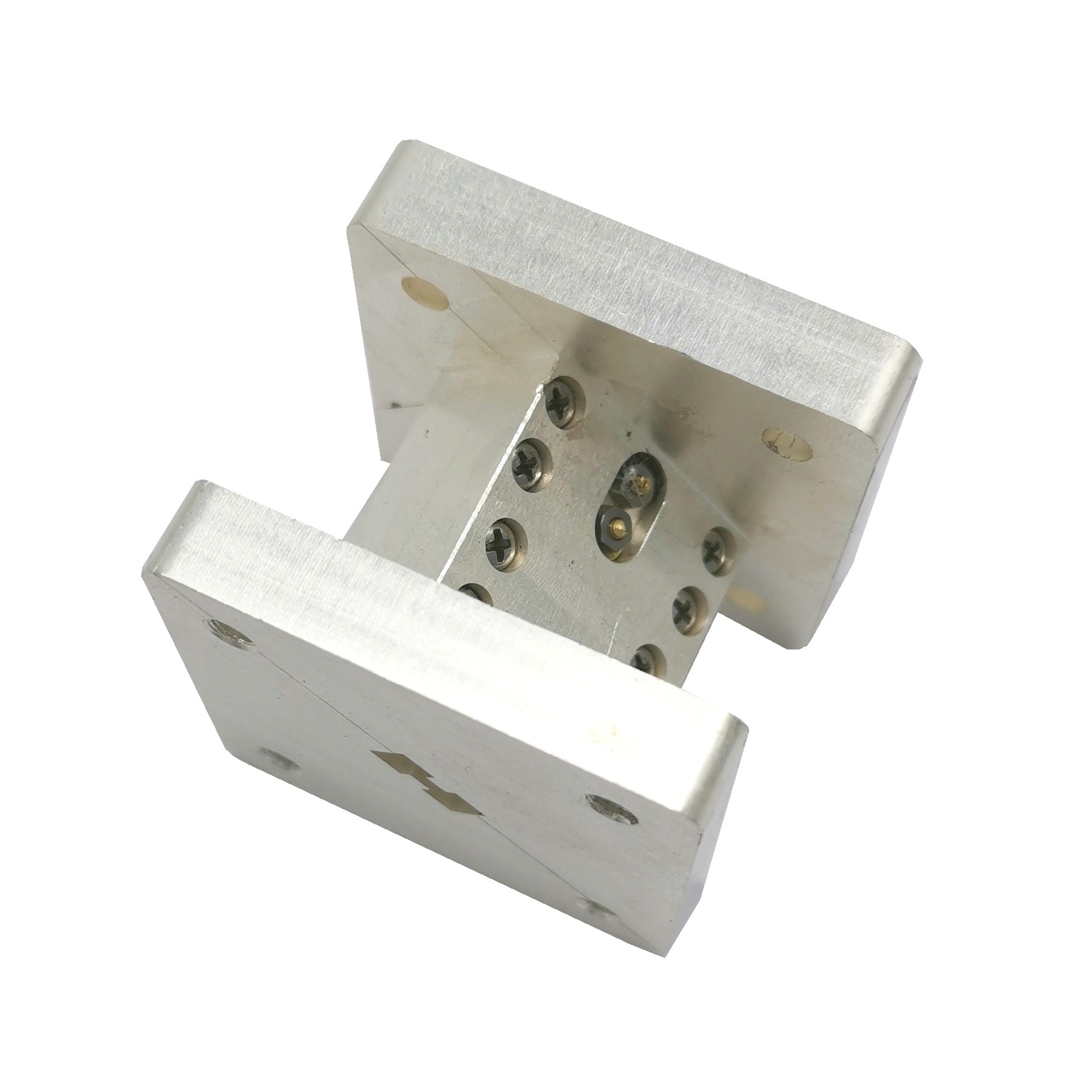| Sign In | Join Free | My frbiz.com |
|
| Sign In | Join Free | My frbiz.com |
|
| Categories | Waveguide To Coax Adapter |
|---|---|
| Brand Name: | Sinoscite |
| Model Number: | TN18-40GS-2991 |
| Certification: | ISO 9001:2015 |
| Place of Origin: | Sichuan, China |
| MOQ: | 1 Piece |
| Price: | Negotiable |
| Payment Terms: | L/C, D/A, D/P, T/T, Western Union, MoneyGram |
| Supply Ability: | 2000 Piece per month |
| Delivery Time: | Less than 4weeks |
| Packaging Details: | Standard exporting carton , each product individually wrapped, high density foam protection professional packing. |
| Material: | Aluminum alloy 6061 |
| Applications: | Microwave test |
| Frequency range: | 18-40GHz |
| Insertion loss: | ≤0.8dB |
| VSWR: | ≤1.5 |
| Waveguide Connnector: | WRD180 |
| Coaxial Connnector: | SMPM(M)-JYD |
| Power: | 10W |
| Model | TN18-40GS-2991 |
| Working frequency | 18-40GHz |
| Insertion loss | ≤0.8dB |
| VSWR | ≤1.5 |
| Waveguide interface | WRD180 |
| Coaxial interface | SMPM(M)-JYD |
| Power | 10W (design guarantee) |
| Surface treatment | The inside of the cavity and the flange surface are silver-plated,
and the other surfaces are painted black: T. black TS96-71.11.E
(need to have Primer), no paint in the screw holes |
Outline



The directional coupler is a widely used microwave device in microwave systems. It is widely used in power measurement, microwave transmission systems, reflectometers and duplexers. Due to the different application occasions and conditions of directional couplers, there are many types and great differences. From the structure, it can be divided into waveguide, stripline, microstrip line, and coaxial line coupler; from the coupling form, it is divided into small hole coupling, branch line coupling, and parallel coupling. The research on directional couplers at home and abroad is quite mature, especially the waveguide directional couplers have the longest research time and the most varieties. However, the design and research of applying dual-ridge waveguides to directional couplers is relatively rare. From the development trend of the bandwidth of modern microwave systems, the design of dual-ridge waveguide directional couplers has important research value. Because modern electronic systems, measurement systems, and some microwave systems are required to achieve higher and higher bandwidths, this trend puts forward higher bandwidth requirements for various microwave devices, so the study of high-bandwidth microwave devices has urgent practical significance. This trend is no exception for directional couplers. This article will combine various literatures and materials, and on the basis of the analysis of the ridge waveguide, rectangular waveguide, and coupling method, design a broadband directional coupler with asymmetric cross-hole coupling. Since the ridge waveguide has a lower cut-off frequency than the rectangular waveguide, the ridge waveguide has a wider frequency band under the same size. In the design process of this paper, firstly analyze the design using circular hole coupling to understand the advantages and disadvantages of circular hole coupling, and then use asymmetric cross hole coupling to improve the coupling performance. Through comparison, it is found that the asymmetric cross-hole coupling has higher advantages in bandwidth than the round-hole coupling. At the same time, theoretical analysis and software simulation are applied to make a simple and easy improvement of the dual-ridge waveguide coupler to improve the performance of the coupler. Secondly, since the feed of the waveguide coupler basically uses the coaxial probe method, this article not only comprehensively analyzes the design of the dual-ridge waveguide directional coupler but also deeply studies the coaxial waveguide converter.The main work is as follows: 1. The types, coupling mechanism and main performance parameters of the directional coupler are introduced. On this basis, the transmission characteristics of the double-ridge waveguide and the rectangular waveguide are studied, and the research simulation examples are given by using the HFSS software. 2. Design a directional coupler with asymmetric cross-slot coupling, and analyze the effect of small hole diameter, hole spacing and hole edge distance on coupler parameters. 3. Analyze the influence of the small change of the double-ridge waveguide structure size on each index, and obtain the sensitivity factor of the coupler index change. 5. Design a coaxial waveguide converter that converts between the double-ridge waveguide and the coaxial, and Study its impedance matching and bandwidth characteristics.

|